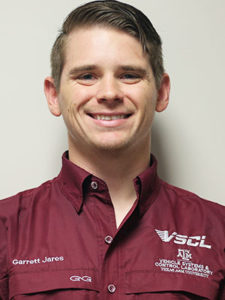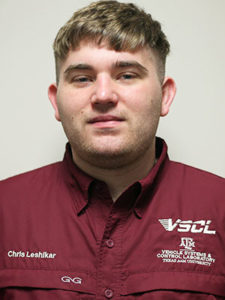VSCL graduate students Garrett Jares and Chris Leshikar presented papers virtually on 18 June at the 2021 ICUAS in Athens, Greece.
 Garrett Jares ’17 presented the paper “Investigating Malware-in-the-Loop Autopilot Attack Using Falsification of Sensor Data”, which seeks to investigate and further understand the threat of UAS hijacking via cyber attack. The paper builds on previous work by further investigating an attack method in which the attacker attempts to gain control of the vehicle by intercepting and modifying the vehicle’s sensor data. This attack is explained analytically, demonstrated on a simple second-order system in a MATLAB/Simulink simulation, and validated in a series of Gazebo simulation experiments using the ArduPilot Software-In-The-Loop simulation. These experiments serve to validate and evaluate the performance of the attack on a real-world autopilot software and the attack is shown to pose a legitimate threat to the system.
Garrett Jares ’17 presented the paper “Investigating Malware-in-the-Loop Autopilot Attack Using Falsification of Sensor Data”, which seeks to investigate and further understand the threat of UAS hijacking via cyber attack. The paper builds on previous work by further investigating an attack method in which the attacker attempts to gain control of the vehicle by intercepting and modifying the vehicle’s sensor data. This attack is explained analytically, demonstrated on a simple second-order system in a MATLAB/Simulink simulation, and validated in a series of Gazebo simulation experiments using the ArduPilot Software-In-The-Loop simulation. These experiments serve to validate and evaluate the performance of the attack on a real-world autopilot software and the attack is shown to pose a legitimate threat to the system.
 Chris Leshikar ’20 presented the paper “Asymmetric Quadrotor Modeling and State-Space Identification”, which addresses system identification flight test results of an asymmetric quadrotor. The goal of the flight tests was to obtain a linear state-space model of an asymmetric Modified F450 quadrotor using the Observer/Kalman Identification (OKID) algorithm. Automated excitation maneuvers were injected using the Developmental Flight Test Instrumentation Two (DFTI2) system. The identified models obtained from the flight tests are then compared to analytical state-space models derived and presented in the paper. The identified linear state-space model using automated excitations matched reasonably well with the nonzero elements of the analytical linear state-space model.
Chris Leshikar ’20 presented the paper “Asymmetric Quadrotor Modeling and State-Space Identification”, which addresses system identification flight test results of an asymmetric quadrotor. The goal of the flight tests was to obtain a linear state-space model of an asymmetric Modified F450 quadrotor using the Observer/Kalman Identification (OKID) algorithm. Automated excitation maneuvers were injected using the Developmental Flight Test Instrumentation Two (DFTI2) system. The identified models obtained from the flight tests are then compared to analytical state-space models derived and presented in the paper. The identified linear state-space model using automated excitations matched reasonably well with the nonzero elements of the analytical linear state-space model.
